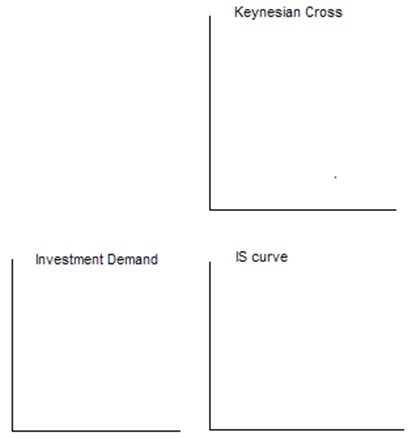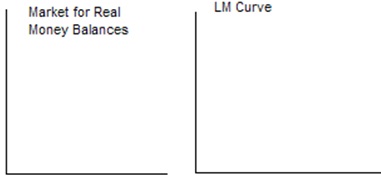You are given the following information about a closed economy.
Y = C + S + T
Y = E in equilibrium
C = a + b(Y – T) = 320 + .5(Y – T)
r = 10 – (0.1)I
G = 100
MS = nominal money supply = 400
(M/P)D = demand for real money balances is expressed by the following equation:
r = (.1)Y – 72 – (.01)(M/P)D
P = 1 initially
T = (.2)Y
Problem 1. Using the above information, derive the IS equation for this economy. In your derivation indicate your reasoning: i.e., what underlies this equation?
a. Explanation underlying your derivation of the IS curve:
b. Derivation of the IS curve:
Problem 2. Using the above information, derive the LM equation for this economy. In your derivation indicate your reasoning: i.e., what underlies this equation?
a. Explanation underlying your derivation of the LM curve:
b. Derivation of the LM curve:
Problem 3. What are the equilibrium levels of the interest rate and aggregate output for this economy? Show your work.
a. The equilibrium interest rate
b. The equilibrium level of aggregate output
Problem 4. On the graphs below, draw the investment demand curve, the Keynesian cross diagram and your IS curve that you derived in question (1). Label all possible intercepts in your graphs as well as all axes. Label final values you found in solving this IS-LM model.

Problem 5. On the graphs below, draw the market for real money balances and the LM curve you derived in question (2). Label all possible intercepts in your graphs as well as all axes. Label final values you found in solving this IS-LM model.
